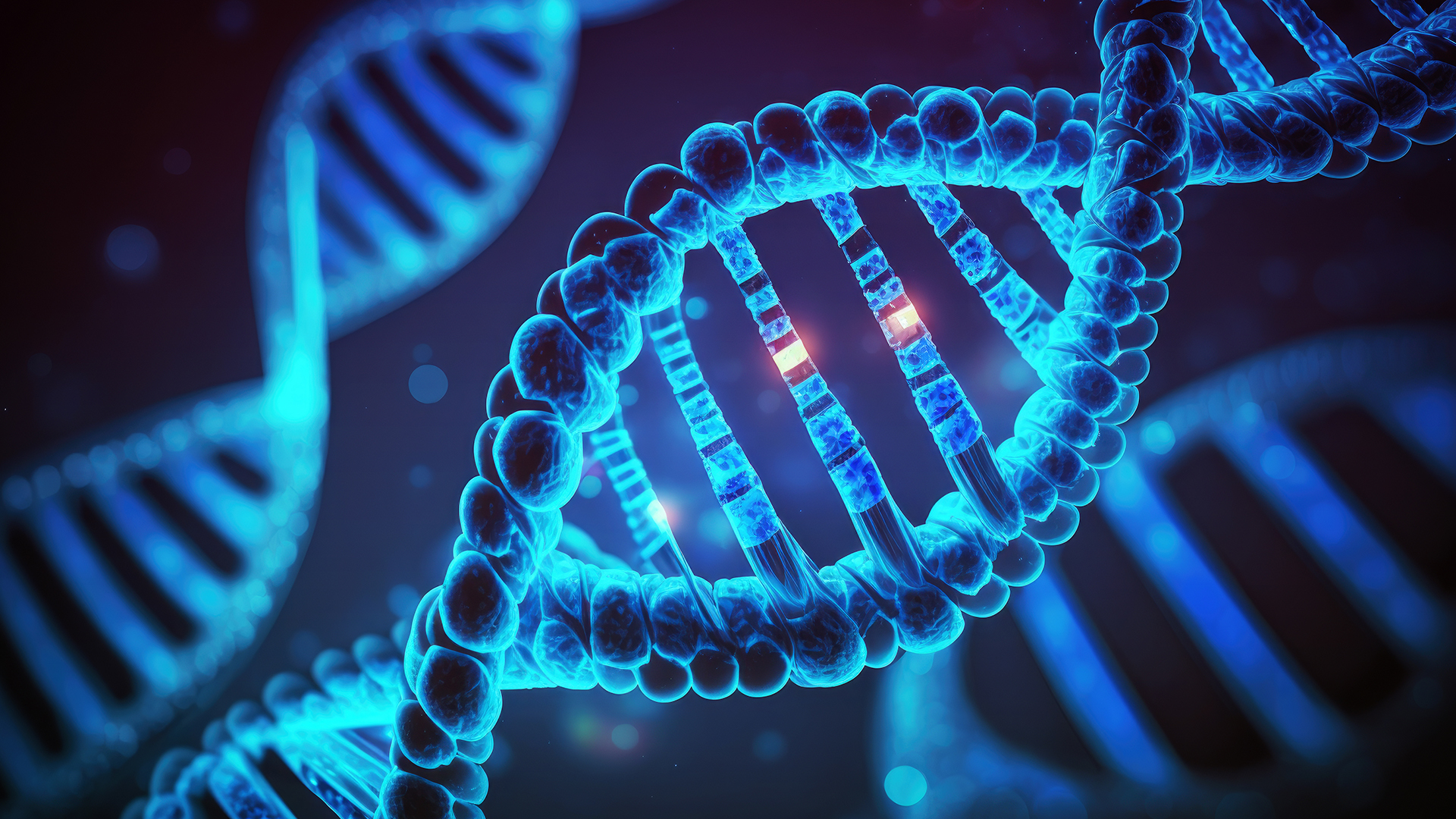Neanderthal DNA may shape how sensitive you are to pain, genetic analysis shows
Scientists studied genetic samples from more than 7,000 people and linked three genetic variants, inherited from Neanderthals, to increased pain sensitivity.

Neanderthal gene variants may boost the pain sensitivity of people who carry them and may be most common in populations with prevalent Native American ancestry, a new study finds.
The research, published Tuesday (Oct. 10) in the journal Communications Biology, focused on three versions of the SCN9A gene, which codes for a protein that shuttles sodium into cells and helps pain-detecting nerves send signals. People with any of the three variants are more sensitive to pain caused by being prodded with a sharp object, but not pain caused by heat or pressure.
"In 2020, another group of researchers studied people of European ancestry and linked these Neanderthal gene variants to increased pain sensitivity," first study author Pierre Faux, a geneticist at the French National institute for Agriculture, Food and Environment, told Live Science.
"We extend these findings by studying Latin Americans and showing that these Neanderthal genetic variants are much more common in people with Native American ancestry," Faux said. "We also show the type of pain these variants affect, which wasn't known before."
Related: Mysterious 'Viking disease' linked to Neanderthal DNA
In the new study, the scientists analyzed genetic samples collected from more than 5,900 people living in Brazil, Chile, Colombia, Mexico and Peru. On average, the participants had 46% Native American ancestry, 49.6% European ancestry and 4.4% African ancestry, but these proportions varied significantly between individuals.
The analysis revealed that around 30% of the participants had one of the SCN9A gene variants, called D1908G, while roughly 13% of participants had the other two gene variants, known as V991L and M932L, which tend to be inherited together.
Sign up for the Live Science daily newsletter now
Get the world’s most fascinating discoveries delivered straight to your inbox.
The participants living in Peru, who had the highest proportion of Native American ancestry among the countries studied, were most likely to carry these Neanderthal gene variants. Conversely, participants recruited from Brazil had the lowest proportion of Native American ancestry and were least likely to carry the variants.
"We know that modern humans and Neanderthals interbred something like 50,000 to 70,000 years ago, and that modern humans first crossed over from Eurasia into the Americas by 15- to 20,000 years ago," Faux said.
"The high frequency of the Neanderthal variants in people with Native American ancestry could potentially be explained by a scenario where the Neanderthals carrying these variants happened to breed with the modern humans who eventually migrated into the Americas," he said.
Related: The 1st Americans were not who we thought they were
Following the genetic analysis, the researchers carried out pain threshold tests on more than 1,600 volunteers in Colombia, 56% of whom were women, who had on average 31% Native American ancestry, 59% European ancestry and 9.7% African ancestry. In these tests, participants were asked to tell the researchers to stop as soon as they felt discomfort. The team also analyzed the gene variants carried by each of these tested participants.
In one of the tests, the team applied mustard oil, which irritates the skin, to the forearm skin of participants before pushing plastic filaments of increasing widths onto the same area of skin. In this test, wider filaments exerted a stronger force on the already-irritated skin. Participants who had any of the Neanderthal gene variants tapped out after being prodded with filaments that were significantly smaller than those who did not carry the gene variants.
"When we tested the participants' pain threshold by applying pressure, heat or cold, the gene variants did not affect pain sensitivity, so the Neanderthal variants only affected their response to pinprick pressure," Faux noted.
It is possible that carrying these gene variants gave Neanderthals, and the modern humans who first settled the Americas, some sort of survival benefit, Faux said. But that survival benefit wasn't necessarily related to pain sensitivity, he added.
"The modern humans who first reached North America would have had to bear harsh and cold conditions, so it could be that these variants have other effects beyond pain — for example, they could have somehow helped humans to cope with the cold," he said. In other words, the heightened sensitivity to sharp objects might have been just a side effect of another evolutionary change.
However, the evolutionary pressures that acted on SCN9A were likely complex, and "why Neanderthals might have had a greater pain sensitivity and whether introgression in SCN9A represented an advantage during human evolution remains to be determined," the authors wrote..
Nevertheless, it is interesting to know these gene variants, which have previously been linked to small fiber neuropathy — a painful nerve condition — would have also caused pain in our Neanderthal ancestors, Sulayman Dib-Hajj, a professor of Neurology at the Yale School of Medicine who was not involved in the study, told Live Science in an email.

Carissa Wong is a freelance reporter who holds a PhD in cancer immunology from Cardiff University, in collaboration with the University of Bristol. She was formerly a staff writer at New Scientist magazine covering health, environment, technology, nature and ancient life, and has also written for MailOnline.









